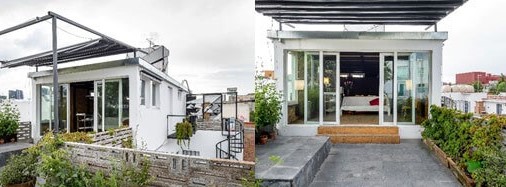Global concerns on Climate Change are shaping the way we build
 © Dr Alejandro Moreno-Rangel
© Dr Alejandro Moreno-Rangel
The global concerns on Climate Change are shaping the way we build. The Passivhaus standard is a voluntary scheme that aims to minimise energy consumption to a maximum making enough to heat a complete house with a hair dryer. That sounds great, doesn't it? The problem is that we haven’t stopped climate change and global warming is a reality. As we design homes, the environment is getting warmer and warmer, and we need to design resilient and future-proof homes.

Figure 1. Passivhaus In Mexico City
The Passivhaus Standard started in cold climates, but now we find it in warmer climates. In this case, the idea is reversed. Rather than keeping the warm inside, a Passivhaus intends to keep it outside. Hence, whether in cold or warm climates, the Passivhaus home is supposed to be comfortable all year round. This project measured the indoor temperature and relative humidity of the first Passivhaus in Latin America. The measurements were carried out over one year to understand the comfort of Passivhaus buildings in relatively new weather conditions.
When evaluating thermal comfort, there are two approaches to doing this: dynamic and static methods. A static method is when you set a defined minimum and maximum temperature threshold for comfort and can be interlinked to relative humidity. For instance, the Passivhaus criteria set temperatures between 20°C to 25°C and relative humidity from 30% to 70%.

Figure 2. Static criteria analysis of the indoor temperatures and relative humidity in a psychrometric chart
The dynamic methods refer to those that use a temperature that varies accordingly to specific parameters. The most common are outdoor temperatures, to define minimum and maximum levels. As described in the CIBSE TM52, the Adaptive approach uses the ‘outdoor running mean temperature’ of the last 8 days.

Figure 3. Dynamic criteria analysis of the indoor temperatures and relative humidity
As you can see in both images, the Passivhaus criteria set a maximum of 25°C. Conversely, the Adaptative approach sets the limits between 23°C to 29°C during May due to the high outdoor temperatures in Mexico City. In this study, the indoor comfort of the Passivhaus was evaluated following both approaches. The Passivhaus and the Adaptative method found that the temperatures were comfortable and remained below the maximum levels most of the time.
The article is published in the Journal of Building Engineering, and you can access it here: https://doi.org/10.1016/j.jobe.2021.103081
Back to News
